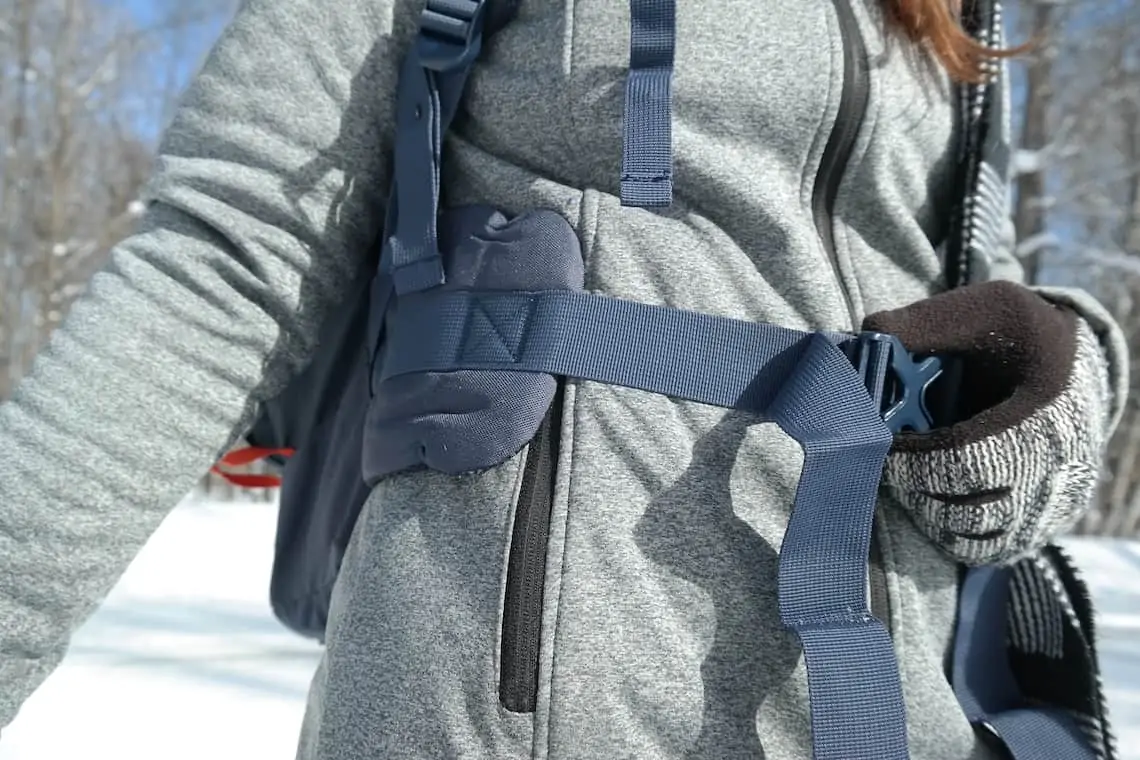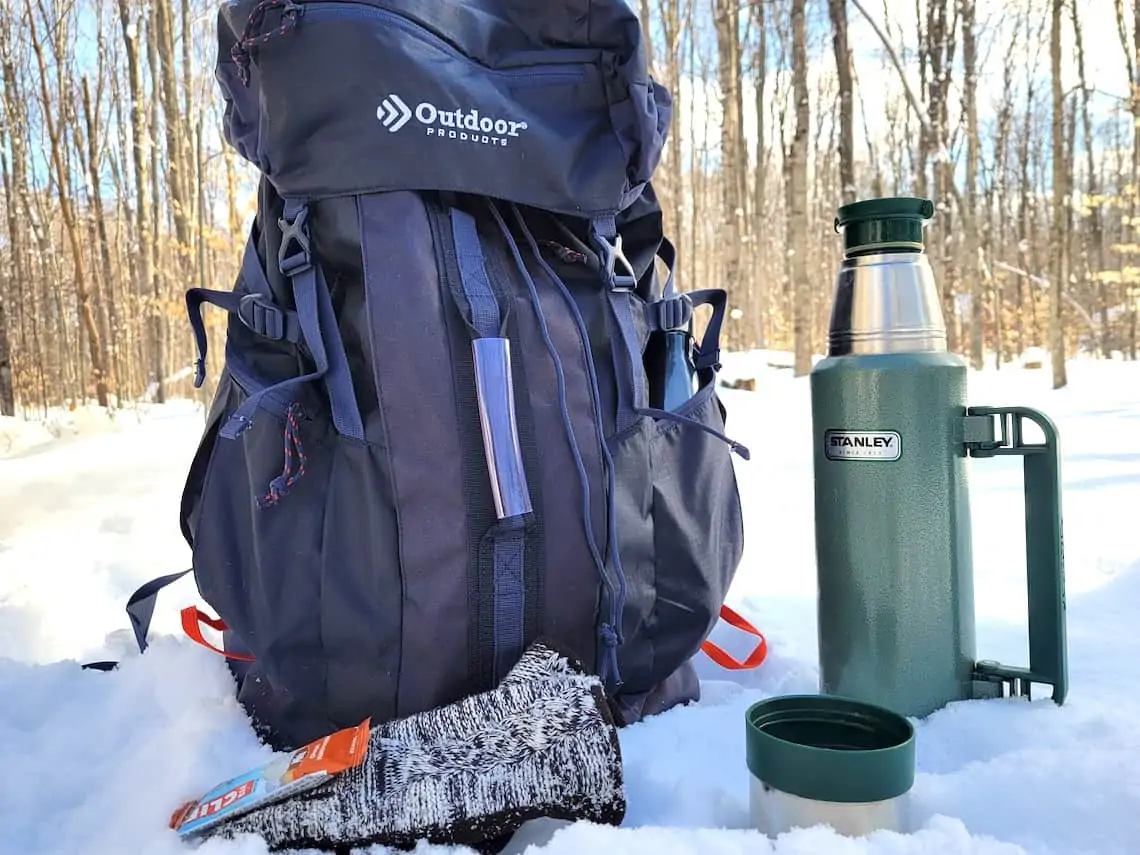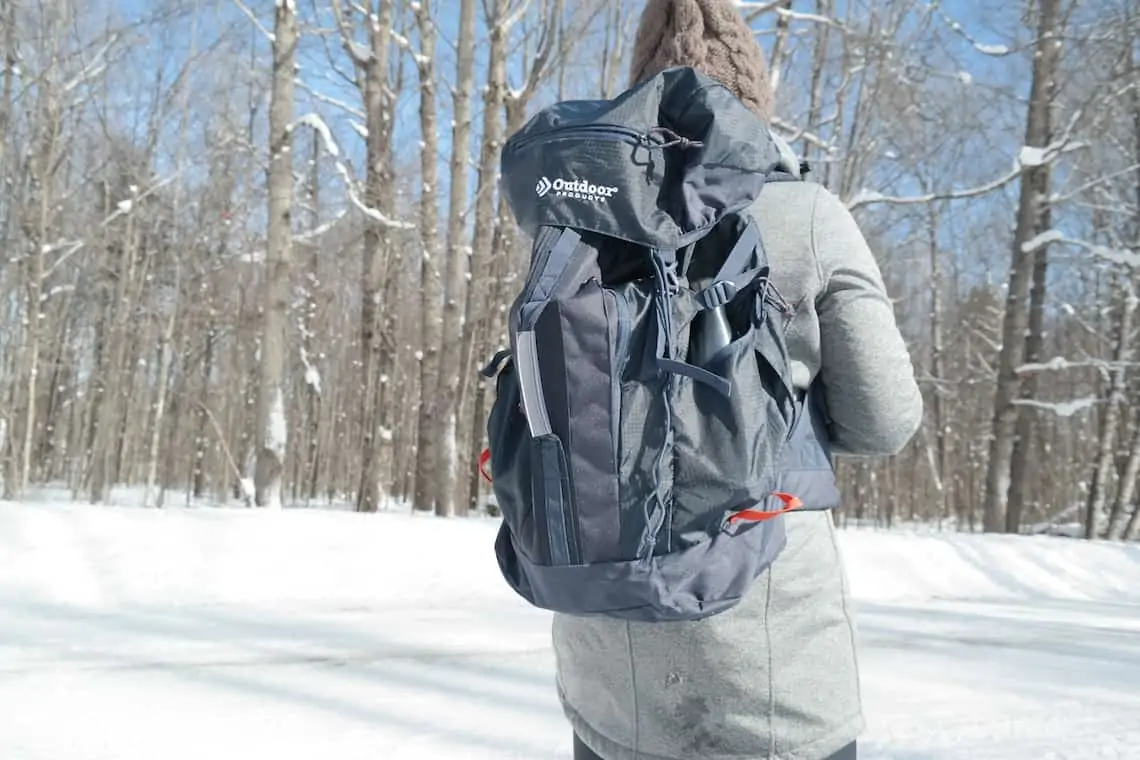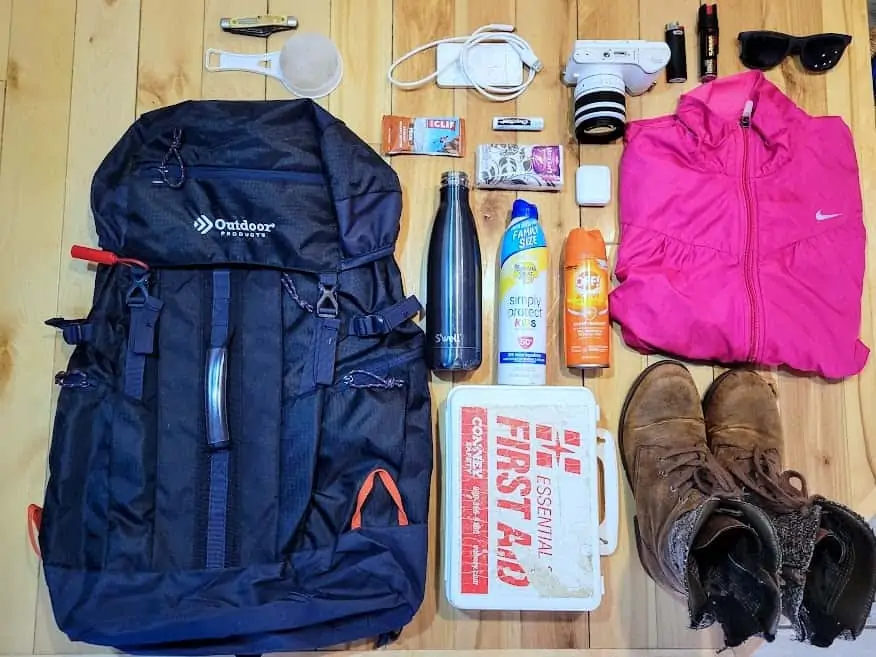If you are planning on hiking through the woods or scaling mountains, it is important to have a good backpack. There are many different backpack for hiking options available, but an internal frame pack is among the best choices for hikers.
An internal frame helps keep your center of gravity close so the pack isn’t bouncing around and dragging you to the ground along with it.
If you are doing any extended hiking or backpacking that requires a decent amount of gear, you will need something durable that can hold a lot with becoming too bulky or heavy.
Several years ago, my husband and I biked the eight miles to the campground on Beaver Island with all of our gear for four days of hiking and camping. I made the mistake of using a standard, everyday backpack for all my gear and a strap tore only three miles into our trip.

And, because I’m clearly not an outdoor survivalist, I had the same thing happen again in Italy while trekking my luggage from one location to the next using a backpack that was not worth what I paid.
This is a big reason I have started using internal frame packs. I love the versatility and durability of a backpack and use them for hiking and general travel.
Outdoor Products makes an entire line of internal frame packs, and I was fortunate enough to be able to test one out.
What are the advantages of internal frame packs?
The debate over internal frame and external frame packs has been going on for decades. The question of whether an internal frame pack is better than an external frame pack is often raised with hikers, but the answer depends on your hiking needs.
Support
Internal frame packs provide more support than other types of backpacks because they sit close to your body and transfer weight directly into your hips instead of hanging off them like external frame packs do. The fact that they sit close to the back makes them great for activities that require lots of movement.
I gave the Mammoth Internal Frame Pack a try during some winter hiking in the backwoods of Michigan, and I was pleasantly surprised by the fact that I had no back pain while wearing the pack.
Comfort
It has padded and adjustable hip and shoulder straps which my husband really appreciated while hauling his gear into deer camp for a week.
An internal frame pack is a backpack that has its support structure built into the back panel and hip belt of the bag. Internal frames are typically smaller in size compared to external frames, which can make them more comfortable and easier to carry when you’re not using all of the space inside your bag.

On top of this, they also tend to be lighter because their design does not include any extra material or metal bars that add weight like exterior frames do. The Mammoth has removable internal aluminum stays for a lighter, more versatile pack when necessary.
Ventilation
Internal frame packs also have a gap in the middle that allows for ventilation between your back and the pack itself so you don’t sweat as much or feel sweaty while wearing it since there is airflow to keep things dryer than other types of backpacks. I really like that the Mammoth has a cool mesh padded back to prevent overheating.
This type of backpack can be worn comfortably all day no matter how far you are hiking because they are lightweight, flexible, ergonomic, budget-friendly, and easy to care for which makes them very popular with hikers today!
How to choose the right backpack for hiking
Of course, a frame backpack isn’t going to be the correct choice for all hikers or hiking situations.

To help you decide which backpack will work best for your needs, here are a few things to consider before purchasing a new backpack:
Size
How much weight do you plan on carrying? If you’re going out for just an hour or two, then any size pack would probably do just fine – something lightweight with simple features.
However, if you plan on being out there longer than that or bringing more supplies with you (i.e., food and water), then make sure to choose something bigger.
No matter what size pack you choose make sure there are at least two generously sized side pockets (one should be mesh) so water bottles can be stored there.
I was pleasantly surprised by the amount of gear I could pack into the 47.5L Mammoth and even happier with the numerous zipper pockets and the reinforced front carry handle.

In addition to hiking, I will definitely be using this the next time I travel. The handle makes it perfect to drag along with me through the airport or toss in the back of the truck. the drawstring main compartment with flap also means I can smash more stuff in there than I could with a traditional zipper.
Fit
The most important thing about your hike is how safe it will be, so make sure you buy a backpack that fits well and allows for good ventilation so the weight doesn’t become too uncomfortable or feel like it’s pulling you backwards.
Make sure that when you find a new backpack to buy one which has adjustable straps (both shoulder and waist – the Mammoth also has adjustable sternum straps for added support) since this will keep everything secure on your back no matter what size or shape you are. After all, hiking is meant to be fun.
Material
When choosing between synthetic packs, get something with more cushioning since they typically have better suspension systems which will prevent your back from being damaged or experiencing discomfort.

Plus, if you’re going on longer hikes where you’ll be out in the wilderness overnight, then opting for a waterproof material is an important feature to look for as well so all of your supplies stay dry even when it’s raining outside.
Storage
If you plan on taking longer trips more frequently, then consider buying something roomier with better storage options since there are more supplies involved in these types of treks (i.e., extra layers of clothing).
It also helps if your bag comes equipped with some basic hiking tools such as an ice axe attachment or trekking poles that can attach to the sides of the pack itself.
How to Pack for a Day Hike in Michigan
Michigan is a great state for hiking. Whether you’re in the Upper Peninsula or Lower Peninsula, there are plenty of trails to choose from – even some secret gems you may not have tried yet.

If you’re new to Michigan hiking, here are some tips on what to pack for a day hike.
- First and foremost, make sure you have comfortable shoes and appropriate clothing for the weather.
- In addition, be sure to pack sunscreen, insect repellent, water and snacks, and a first-aid kit.
- Always bring a decent pair of hiking boots, the terrain changes quickly.
- You also need a waterproof jacket no matter how hot it is outside. The weather is always windy near the lakes and gets cooler than you would expect.
- I also bring pepper spray for safety (in case of unfriendly animals or people), a pocketknife, a lighter, and portable phone charger in case of emergencies.
- Aside from the essentials, I never forget my camera, headphones, sunglasses, and a rock strainer to look for some Petoskey stones.
If you’re unsure what to bring or how to prepare for your hike, do some research online or consult with an experienced hiker.
Now that you’re prepped and ready to go, get out there and enjoy some of the best outdoor adventures in Michigan! From sandy dunes overlooking Lake Michigan, to dense forests and rushing rivers, our great state offers something for everyone when it comes to hiking and camping.
So what are you waiting for? Get packing!